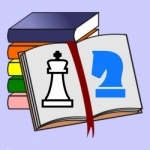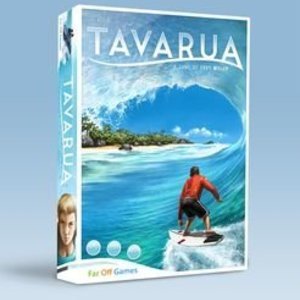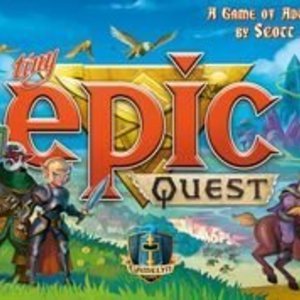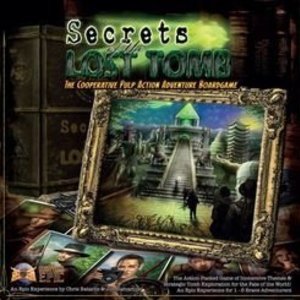Purple Phoenix Games (2266 KP) rated Quests: Heroes of Sorcado in Tabletop Games
May 26, 2021
Disclaimer: For this preview, we were provided with a Tabletop Simulator file for the demo/prequel adventure. These are not the final components, since it is a digital file, but the artwork and rulebook are mostly finalized – so the gameplay is what you will get in the physical copies of the game. -L
Quests: Heroes of Sorcado is a cooperative, campaign-driven game in which 1-6 players will take on the roles of party members with the goal of completing all 8 of the included adventures. The game does come with a tutorial/prequel adventure to help introduce players to the mechanics and overall gameplay before diving in to the full game. To setup for this Adventure Zero, place the game board within reach of all players, set aside the Campaign and Adventure books, place the Boss card for this adventure face-down above the board, and sort and place Potion/Loot/Armor/Health tokens in their corresponding areas. Set the 6 required Adventurers for the prequel in a circle near the game board, and take the listed Health and Starting Equipment for each Adventurer. The prequel uses only a single Location, so set that Deck in one of the Location spaces of the board, and the game is now ready to begin!
Depending on the player count, everyone will take on the role of at least one of the Adventurers, and the game itself is wholly cooperative. Here is how Adventure Zero works. Each Adventurer, in clockwise order, will be dealt 1 face-down Location card. Then, starting from the first dealt Location card, the Adventurers will take turns revealing their card. Some cards are Events or Story Moments, and prompt players to read from the Adventure/Campaign books. These cards often describe a scenario and require the player to select one of several provided choices, either earning a reward or penalizing the group. Most cards are Monster cards and will begin a combat! Each of the Adventurers has varying values for the four Stats of the game: Strength, Intelligence, Dexterity, and Wisdom. Combat in the game involves rolling a d20 and adding the appropriate Stat modifiers to the roll. You can also use Potions and Equipment to buff your rolls as well. How do you determine success or failure? Every Monster has a weakness to a specific Stat, so you will use that Stat modifier to enhance your rolls. Equal or exceed the Monster’s weakness, and it is defeated! Depending on the difficulty/level of the Monster, you will either fight with 2-6 Adventurers – adding their modifiers and abilities to your roll as well. How you setup your Adventurers is important, as adjacency is what helps determine who can be in each combat. If you defeat a Monster, collect the reward (Loot tokens, Potions, or Treasure cards), and the game continues to the next player. If you lose the fight, the Monster moves to the next Adventurer and combat begins anew. Once every Location card has been revealed and resolved, the Adventurers will reveal the Boss card and the final combat begins! Even though each combat has one primary Adventurer/player at the helm, the game is cooperative, so make sure you’ve got that teamwork mentality!
I have to say that I was pleasantly surprised by Quests: Heroes of Sorcado. The gameplay may seem a bit involved at first, but it actually flows pretty seamlessly and effortlessly. As someone who has played a handful of other campaign-driven board games before, I have to say that this one was by far the easiest for me to learn and play. Resolve Location cards, beat Monsters, and (hopefully) defeat the final Boss. Pretty straight-forward, and I really appreciate that. One thing that helps make it so user-friendly is that the game is based on only 4 Stats, instead of every conceivable Stat used in other role-playing games. That helps keep the game uncomplicated, while still offering players options every turn. Another thing that I really like? The Campaign/Adventure books are pre-written stories, prompts, and scenarios that allow the game to be truly cooperative. No need for an all-knowing Game Master here, as everything is already laid out for you. I also really like these pre-written aspects because it helps deliver the role-playing feel without pressuring the players to create their own campaign. Yes, there are still some ‘choose your adventure’ elements to it, but it doesn’t give so many options to overwhelm players.
That being said, I do have to mention that this is a campaign-driven game, so you will know the main storyline after your first complete playthrough. Although you would know the Monsters/Events/Boss/etc. of each adventure, the shuffle and draw of the decks would allow for variability, and thus replayability. You know the all the twists in the story, but will be able to play with different hero combinations as well! All 8 adventures will take quite some time to complete though, so don’t let the fact that you’ll know the main storyline after one playthrough turn you off from the game completely! Normally, I like to talk about the components of a game. Since this was a Tabletop Simulator version of the game, I am unable to really do so. I will commend the artwork and style of the game though – it is very thematic, engaging, colorful, and fun to look at. The text and abilities are clear, I love the color-coded modifiers, and the cards are all pretty intuitive. I have no doubts that the physical copies of the game will be quality productions as well.
As I stated above, this preview only covers the demo/prequel adventure, and its real purpose is to introduce players to the gameplay. That being said, I know that the full adventures will offer players additional elements (Side Quests, trading Loot and Potions, ‘level up’ the Adventurers, etc.) that will just add to the experience. Yes, there is the ‘one and done’ aspect of a campaign-driven game, but there is so much content in the full game to keep you going for quite a long time. If you’re looking at getting into this genre of game, but are worried about complexity, I would highly recommend Quests: Heroes of Sorcado. The gameplay overall is simple and straight-forward, while still offering the epic campaign feel. This one hits Kickstarter today, so head on over and check it out for yourself!
Purple Phoenix Games (2266 KP) rated Hunters of the Lost Creatures in Tabletop Games
May 8, 2022
Hunters of the Lost Creatures is a silly set collection card game for three to four players. In it, players assume the roles of zoological park curators charged with collecting unique creatures for their parks. They do this by bidding on and drafting creature cards, playing take-that style cards on their opponents, and blocking their cards from being manipulated by others.
DISCLAIMER: We were provided a prototype copy of this game for the purposes of this review. These are preview copy components, and I do not know for sure if the final components will be any different from these shown. Also, it is not my intention to detail every rule in the game, as there are just too many. You are invited to download the rulebook, back the game through the Kickstarter campaign, or through any retailers stocking it after fulfillment. -T
To setup, players choose one hunter card from each of the four hunting zones: Sea, Forest, Plains, and Air, as well as three “Park Closed” cards. The creature cards are to be split by zone and shuffled, with one special card (Turnado and Cat-a-Pult) added. These shuffled decks are then placed on the table and the top card revealed from each deck. Players decide turn order and the game may begin!
Hands are mostly played simultaneously, with players choosing either a hunter or special card from their hand and placing it face-down in front of themselves. All cards are revealed simultaneously and the card effects are applied. If a player has revealed a hunter, and no other players have the same-colored background/terrain type, that player receives the matching card from those on offer and places it in their park (tableau), or ANY OTHER PLAYER’S park. If ALL players have chosen the same terrain type hunters, the card on offer is removed from the game entirely. However, if not all hunters match, but at least one matches, the matching hunters’ players receive no cards.
Should a player choose to play a special card, their effects are triggered once per game. These include Turnado (switch any two creatures in any two parks), Cat-a-Pult (discards any creature from any player’s park), Thieves (steal any one terrain-matching creature and places it in the Thieves player’s park) and Closed Park (protects the player from the effects of aforementioned special cards). Again, these special cards may only be played once per game, so special consideration is needed as part of their strategy.
The game continues in this fashion of players throwing cards, messing with each other using special cards, and protecting themselves from said special cards until only one stack of creature cards remains. The game ends and points are tallied per the scoring table in the rulebook. The winner is promoted to Head Creature Park Guy and is carried around by the other players. Okay, that’s not at all true. They just win the game.
Components. Again, this is a prototype copy of Hunters of the Lost Creatures, so all components shown here are subject to change at any time. That said, I received a huge deck of cards in a cute black cloth bag. The cards are all decent quality, and not super glossy, which I appreciate. The art on these cards are all whimsical and silly, which match the silly and punny titles for each. Some of these punny titles can be seen in our photos, with my favorites being the Dandylion (a well-“dressed” weed with a cane and lion face) and the Cougar (which is subtle, but portrays an adult apex big cat with a smaller and younger cat hanging on it). If you enjoy these somewhat intellectual, and sometimes visual, puns you will enjoy these cards.
What I have found in playing through this several times is that it is best when all players are taught the game backwards…ly. I mean to say that players need to know the premise, but most importantly, the scoring system before even the setup. Points are scored for having a run of 1-2-3, a straight of 0-1-2-3-10, at least one card from each terrain type, and for the printed value on the cards. It is more than simply collecting all the favorite cards or even highest value 10 cards. So there is strategy in collecting the best assortment of creatures for scoring purposes, which is great because otherwise this game is not really a game at all.
As players play their hunters to draft creatures, I have found that many players choose to chase the same cards over and over. It becomes obvious that most players will be vying for the value 10 cards, so the players who figure this out and grab the second best card is usually happier with the hand. Of course, more strategy is employed once the special cards are played, as they each mess with opponents in different ways. So even though I may not have acquired that 10 of Forest, I might grab the Turnado and switch out a value 0 or -10 card for that sparkling value 10. Wait, negative 10? Yep. Sometimes life just smacks you around and you get stuck with a -10 card to really punish your great play. Not that it ever happened to me, and not that I would be bitter about it.
The real game hinges on the usage of the special cards. When do you play them? Whom do you target? Turnabout is fair play, after all, and no alliances can be formed whilst playing Hunters of the Lost Creatures. Now, it is hinted at in the rulebook that preview copies ship with entry-level rules, which mean (to me) that more advanced rules may be coming in the final game, or at least some variants to spice up the gameplay. If true, then this game becomes much more interesting to me. Don’t get me wrong. I have enjoyed almost all of my plays, but be warned that playing with spiteful gamers may end poorly for a fun-filled game night.
All in all, I am excited to see how the campaign for Hunters of the Lost Creatures fares, as I believe many gamers and non-gamers alike will enjoy it. I would be super jazzed to grab a final copy if it does in fact ship with alternate or advanced rules, or if the creatures of the same value had unique names and art. That would really satisfy. Keep the bag or go traditional cardboard box, it matters not to me. Just beef up the card quality, add even more uniqueness and fanciful art and you’ve got a fan in me. Grab your copy during the Kickstarter campaign launching May 10, 2022!
Purple Phoenix Games (2266 KP) rated Tiny Epic Quest in Tabletop Games
Jul 29, 2019 (Updated Jul 9, 2020)
A world at peace has been thrust into chaos once more as mysterious portals have opened across the lands, spewing forth treacherous Goblins! The citizens need heroes – and that is your specialty! Traverse the lands to fight Goblins, learn magic spells, and delve into ancient temples to find powerful artifacts to aid in your battle for good.
Disclaimer: I do not intend to rehash the entire rulebook in this review, but give a general overview of the rules and the gameplay. If you want to read the rules more specifically, pick up a copy of the game at your FLGS or directly from the publisher. – L
Tiny Epic Quest is a game of area movement, dice rolling, and push your luck, in which players are trying to amass the most end-game victory points. How do you earn VPs? By completing quests, fighting Goblins, and learning spells! A game of Tiny Epic Quest is played over 5 rounds, and each round is broken into 2 phases – the Day Phase and the Night Phase. The Day Phase consists of 4 turns where you will can move your heroes. A turn plays out like this: the starting player selects one of the 5 available movement cards and moves 1 hero according to those restrictions. Following clockwise, each other player may move 1 hero in the same manner, or choose to Idle and not move. Once everyone has moved or idled, the next turn starts and play continues as before. After 4 movement cards have been performed, the Day Phase ends.
Moving on to the Night Phase, players have the opportunity to perform the actions associated with the card regions onto which they moved during the Day Phase. If you moved to a Goblin Portal, for example, you now have the chance to fight. On your turn in the Night Phase, you will roll the Adventure Dice and resolve them in an attempt to complete your goals – defeating goblins, completing temples, or learning spells. Quests can be completed in either the Day or Night Phase, depending on the requirements. When you complete a quest, collect the card and hang onto it for end-game scoring. The Night Phase ends when all players have opted to Rest (either by choice or by becoming exhausted), and the round is over. Perform the round resolutions (refill goblin portals, etc.), and then continue on to the next round. After 5 rounds, tally up your VPs, and the player with the most is the winner!
For such a ‘tiny’ game, Tiny Epic Quest definitely has a lot going on. The amount of strategy required for this game is pretty intense. You not only have to decide where to move your heroes, you also have to think about what you want to do and how you want to earn your VPs. Do you want to take a combative approach and try to kill as many goblins as possible? Do you want to try your luck at learning high-level spells? Or is your strategy dictated by the current quest cards in play? Not only do you have to figure out your own strategy, you are also trying to figure out how your opponents are playing as well. Will you try to beat them to a temple first or will you let them do their own thing as long as they don’t interfere with your plans? There is no single right way to play this game, and that’s what makes it so engaging and fun with every play.
That being said, this game also has a fair amount of push your luck in the form of the Adventure Dice. Not all of the die faces are beneficial to you, and they are resolved in a specific order. Damage always is dealt to you first, and if you take too much damage, you immediately become exhausted. When that happens, all of your heroes are returned to your starting castle, and any progress you had made on goblin fights, temple tracks, or spell-learning is lost. You really have to be thinking about how far you are willing to go, and if it is worth one more roll of the dice to risk success or complete failure.
Tiny Epic Quest is kind of a double-edged sword for me. I enjoy games that require decent strategy, but I also am not too fond of push your luck games. This game can sometimes feel like it’s working against you – all of your strategic setup in the Day Phase could be undone with some unfortunate dice rolls in the Night Phase. No matter how solid your strategy is, the dice will ultimately seal your fate. Don’t get me wrong, part of the fun of Tiny Epic Quest is figuring out how to bounce back after a poor Night Phase. But dice can be brutal sometimes and that can take away from your enjoyment.
So where does Tiny Epic Quest fit into the family? I would say it’s a cousin that you like, but don’t see too often. I enjoy playing this game from time to time, but it is definitely not my go-to Tiny Epic game. The rulebook could use some simplification, and for being a Tiny Epic game, it is kind of a table hog. Some of the strategy for me is negated by the dice-rolling mechanic, but it could also be because I am a notoriously bad dice roller… Would I recommend Tiny Epic Quest? Ultimately, yes I would. I may not personally like some of the aspects of play, but the game itself is engaging and entertaining. If you haven’t checked this one out yet, give it a shot! Purple Phoenix Games gives Tiny Epic Quest a valiant 9 / 12.
Paul Kellett (118 KP) rated Secrets of the Lost Tomb in Tabletop Games
May 1, 2019
Almost like a cross between Descent and Betrayal at the House on the Hill, you build the dungeon one tile at a time (from a large stack of room tiles) as you explore 3 levels trying to get to and defeat the boss and retrieve the quest item before the time track runs out.
All the creatures and events are automated making this a fully co-op game and action points are distributed evenly between the adventurers. There is also a special solo only character with a bunch of companions so you can play without having to take control of multiple characters if you wish.
I have now played through all the scenarios several times and this game is still on the top of My dungeon crawl list, it really does everything I wanted. With the base game and 7 expansions, there is a HUGE amount of content as well as rules to combine everything into a full campaign with character progression.
The scenarios are much more varied and interesting than other dungeon crawls. One mission you could be trying to stop a long dead pharaoh from coming back and spreading his evil in the world while the next mission might see you trying to stop Russian commandos from stealing Captain Nemo's submarine, The Nautilus. Each scenario has a 1930s pulp fiction feel to it and, despite the occasional typo, are very well written and thought out.
The scenarios have an introduction which sets the scene, a setup guide that tells you what tiles, creatures and items are specific to the story and need to be set aside and the win/lose conditions. There then follows a series of numbered sections which serve as chapters in the story. These are triggered by various events, normally by discovering room tiles with specific icons on them or by the comet track (which is the game's timer) hitting a certain point. This is a great feature and is easy to follow. I much prefer this to the way the quests are laid out in Descent 2e.
The scenarios are long and so far have taken nearly twice the specified amount of time as listed. That said, you are so immersed in the story and exploring the tomb, the game never feels like it is dragging or outstaying it's welcome. You just need to budget for 3-4 hours of play time per story although this does come down once you are familiar with the rules.
Yes, there are a lot of tokens and stats to keep track of, but I wouldn't say it detracts from the game or the feeling of immersion, especially after the first game or two and the fact that each player takes one action at a time going round the table until all actions have been taken means that there is less downtime than other games.
The AI is very well done with creatures moving and attacking the player with the most soul tokens (gained by killing creatures) so the most dangerous character will be the main focus of the enemy and you can plan your turn to have the right people positioned where they will be best protected/best used.
This is by far the best and most immersive dungeon crawl I've played and really has knocked Descent off as My go-to game of this genre.
Find out more about Secrets of the Lost Tomb and more at Everything Epic Games
Purple Phoenix Games (2266 KP) rated Kingdomino in Tabletop Games
Jun 12, 2019
DISCLAIMER: This review is focused on vanilla Kingdomino. We have the Age of Giants expansion and will be reviewing that as well. Maybe. If or when we do we will add that content to this review or link to it here. -T
Yep. That’s the entire game. On your turn you take the tile your meeple is currently sitting on and place it on another tile from the current offer column. That new tile will be your tile to be placed during the next round. Now you take the tile you just moved from and place it anywhere on your kingdom “grid” matching up similar land types if you can. Each crown icon shown in a land type will score 1 VP per land tile that is connected and matching. Example: you have a sand tile with two crowns on it. You have connected several tiles together and you have a connected sand area of seven squares showing sand. Two crowns times seven squares equals 14 VPs for that sand area. Just do that for all areas with crowns to get your final score.
Where is the conflict, you ask? Every good story has a conflict! Well, you cannot take just ANY tile you want. The tiles are placed in the offer column in numeric order (on the backs of the tiles are numbers). Then they are flipped so you can see what is coming up on the next round. Whomever chooses the lowest number tile goes first, and subsequently chooses their tile for the next round. Herein lies the conflict and what little player interaction there is in the game: you can block your opponent(s) by taking the tiles you see they may want. I personally do not play any games this way, but it’s a valid strategy. I am in it to win it, not in it to make you lose it.
Ok, so at first glance this is a children’s game. It can also be a hard sell to get people to want to play it. “It’s like Dominoes, but better.” That usually doesn’t spark a whole lot of energy and interest when I open with that. I am open to better sales pitches because this is a truly great game. Yes, it’s ultimately Dominoes at its heart. Yes, it’s very light. But dang it, this game is really fun!
The little cardboard castles that you build around are cute, but also kinda unnecessary. The meeples are, well, meeples. Not really too exciting to look at, but they are merely there to show player color. The domino tiles are a good thickness and the art is fun and whimsical. I LIKE looking at the tiles and sometimes finding a little hidden easter egg in there. I have no complaints about the components. Good on you, Blue Orange Games.
The game play is so simple but also so engaging! My mother, who usually only plays Rummikub, actually agreed to play this with me and she really really enjoyed it! Kids can play it and do really well. Older adults can too! It’s a great game to consider for gateway gaming, for a filler palate cleanser, or even for lighthearted tournament play. It just works well in so many scenarios. Is it my favorite game of all time? No. Is it in my Top 10? No. But I can guarantee you that I will never get rid of this little gem.
That said, Purple Phoenix Games gives this title a royal 14 / 18. Build on, Kingdomino!
https://purplephoenixgames.wordpress.com/2019/02/27/kingdomino-review/

Chess-Studio
Games and Entertainment
App
Chess Studio is the first and only application for iPhone and iPad able to completely manage chess...

Video & TV Cast Pro for Samsung Smart TV + Blu-ray
Photo & Video and Entertainment
App
Watch any web-video, online movie, livestream or live tv show on your Samsung Smart TV or Blu-ray...

Discovr - discover music
Music and Entertainment
App
Explore the world of music with Discovr * No. 1 music app in 50+ countries (US, UK, AU and more) *...

Tavarua
Tabletop Game
Tavarua is a 1-6 player competitive surfing board game. In Tavarua you are a surfer in a surf...
Boardgames SurfingGames 6playerGames





